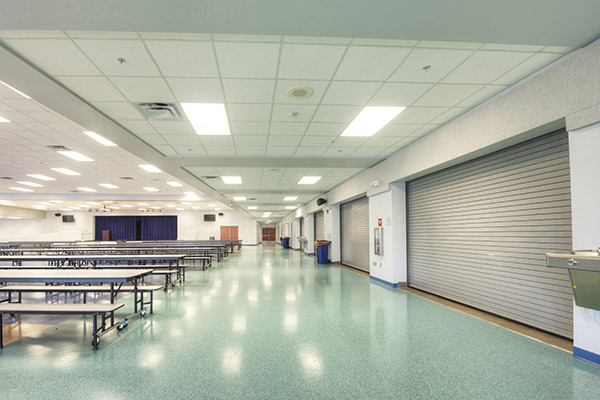Construction Bidding While Sheltering-in-Place
Article | 05.12.2020By Carl Baxmeyer, AICP, Manager of Planning, Wightman
Construction, except for projects related to essential services and products, has largely been halted by the need to shelter-in-place. One area that has been significantly impacted by the restrictions on in-person gatherings is project bidding. Here are a few remedies to the challenges currently being faced.
Typically, the pre-bid meeting is an opportunity to explain the project to contractors and answer questions. Since the pandemic, Wightman has seen this part of the process resolved using communication software such as Microsoft Teams, Zoom, Google Meet, or other platforms. This allows everyone to attend, ask, and answer questions without leaving their desk.
The next challenge comes in the best way to handle a project walkthrough. As you know, a key part of the pre-bid meeting is the walkthrough where contractors have the chance to see the project. They can tour the site, and for projects involving additions and/or renovations, walk the building and verify project specifics as they prepare their construction bids. How does this occur when travel and group gatherings are prohibited?
Walkthrough solutions vary with the complexity of the project. Having the design team representative do a walkthrough using their phone or tablet camera as part of the group call can be effective for some projects. Walkthroughs for more complicated projects can benefit from 3D models which can be shared during the meeting. Architects with very complex projects can use a virtual reality (VR) walkthrough. This allows contractors to “step into” a project and experience a virtual 3D representation of the building and site. Using high-definition laser scanning technology in conjunction with Revit to develop the model, the present condition, and the post-construction images can be shown.
Bid openings is another point in the construction process that is facing challenges and adapting to new ways of doing things. Contractors typically deliver their bids in person just before the opening to ensure proposal security. They then gather and watch as the bids are opened and read aloud to determine where their proposal ranks among those submitted. One solution is to use a web based bid tool.
Steve Carlisle, Director of Engineering for Wightman, and his team are using a software developed by QuestCDN to bid a civil engineering project. Steve explains, “Contractors submit their bids online where they are uploaded to a secure cloud storage site. No one has access to the bids until the published date and time. That is a key feature of the software.” Once the bids are available for downloading the engineer or architect conducting the bid opening with the owner can open the bids and read the results. Contractors and others can watch the opening through video conferencing software eliminating the need for persons to gather while meeting the public bid requirements.
Derk Walkotten, an architect with Wightman, is also using QuestCDN on a project for Glenn Public School. He pointed out that using software for document management when bids are released; communication for virtual meetings; and, for submitting and opening bids, meets the shelter-in-place restrictions in the executive orders issued by the governor. “It is possible to go through the process and award contracts so that contractors are ready to ‘hit the ground running’ when the restrictions are lifted,” said Walkotten.
Both Carlisle and Walkotten stressed that there are advantages and disadvantages.
- For the owner, a definite advantage is that this procedure allows construction projects to proceed up to the point of workers being on-site.
- There is also the potential that since the process eliminates the distance factor of contractors having to travel to the project site, bids from a wider geographic area may be received thereby increasing competition resulting in better bids.
- For contractors, architects, and engineers the process eliminates the need to be on-site.
- Making the bidding process more efficient, especially by reducing travel is a benefit to all.
- The downside is that there is a learning curve and the technology can seem somewhat daunting especially for smaller contractors. They may have limited experience with this new virtual process. They may need to purchase and learn to use Virtual Reality headsets.
Walkotten and Carlisle pointed out that this new process may not be applicable for all projects once the restrictions are lifted. Smaller, simpler projects may proceed in the traditional manner in a post-COVID-19 world. It is clear, however, that many projects will be conducted using this “new normal” approach.
“COVID-19 has forced us [architects and engineers] to rethink how we bid projects”, said Walkotten. “We are now at the point of doing projects electronically from design to the point a shovel goes into the ground. With the advances in technology the concept no longer is ahead of the ability to implement change,” concluded Walkotten.
Struggling with bidding projects for your district? The Wightman team is available and would be happy to help you.
